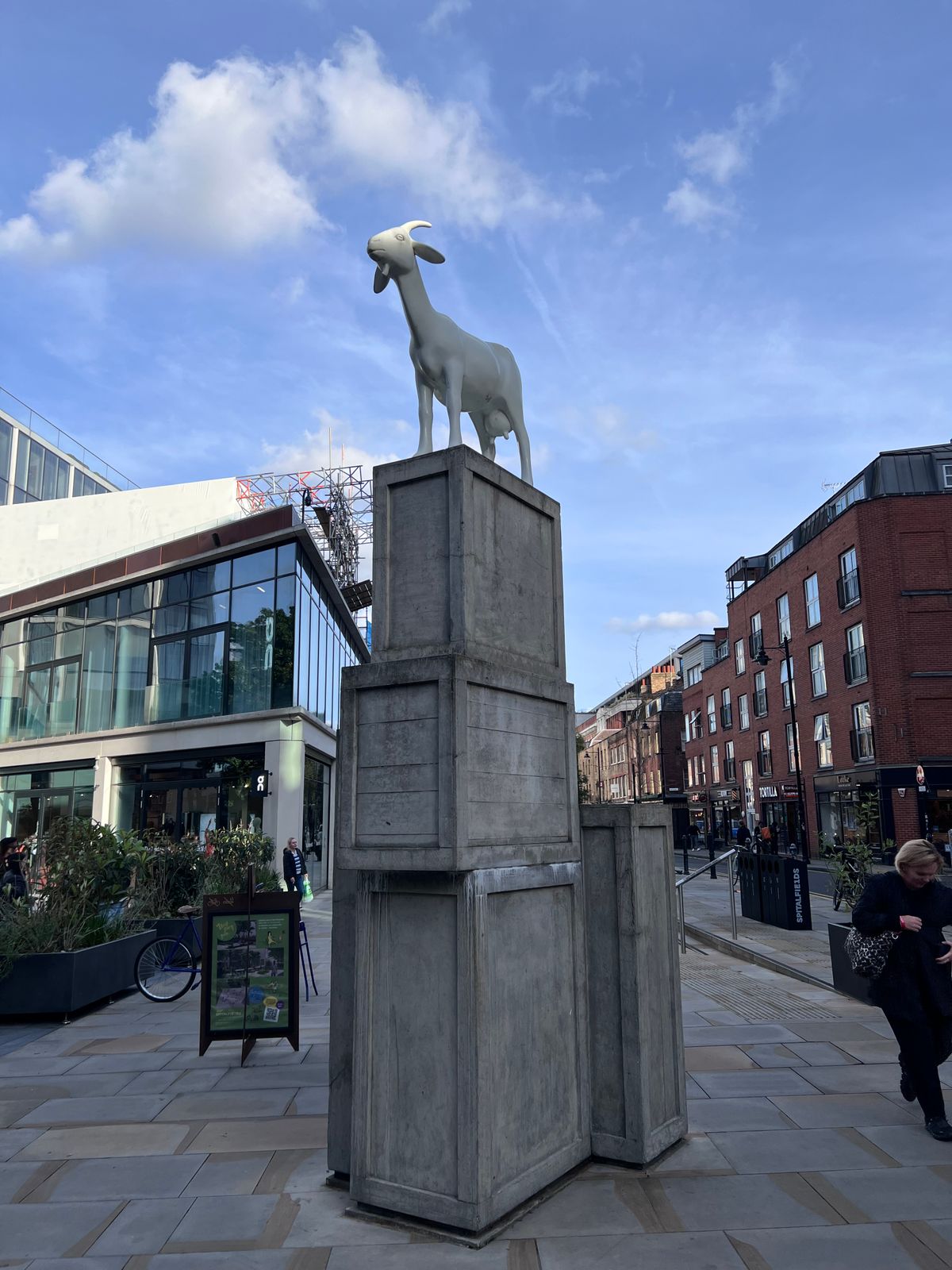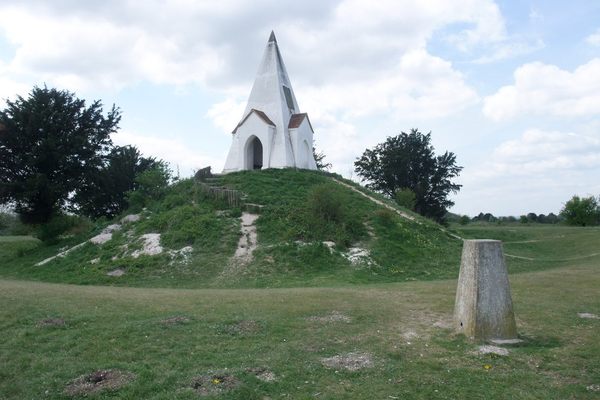About
There’s a bearded lady across the road from the Liverpool Street station in Spitalfields parish. Standing atop a pile of concrete crates, she surveys bankers and lawyers rushing to and fro, listens to buskers in the square, and the bells of Christ Church behind her. She is also a goat.
I Goat, a hand-crafted sculpture by Kenny Hunter, was unveiled in 2011. The aluminum farm animal stands atop a tall stack of crates, locked in a proud stance. Nowadays, she’s the only horned creature in the vicinity, but back when King Charles I licensed the sale of flesh, fowl and roots on the site in 1638, Spittle Fields was a bustling trading ground on the outskirts of London. Robert Horner’s market buildings, completed in 1893, still stand, housing restaurants and shops, although the fruit and vegetable market was moved further east to Leyton in 1991.
According to Hunter though, the goat is less a reference to its cloven-footed ancestors and more, “a symbol for the various waves of migration that have found sanctuary in Spitalfields and helped to shape it. The goat, as an image of persecution and sacrifice, reflects how each successive group of immigrants have faced their own combination of conflict, oppression and poverty, all eventually finding a new home in London."
The Huguenots silk merchants, fleeing from France, were the first to arrive in the 1700s, and their lovely Georgian townhouses are preserved on several cobbled streets around the market. Scrub out the road markings and remove the cars, and you could be fooled into believing that Queen Anne’s sizeable behind was still sitting on the throne. Next along came Jewish immigrants, escaping difficulties in Europe, and bringing the famous bagel to Brick Lane, where it can still be purchased 24-hours-a-day. To complete the culinary complexity, in the 1970s a Bangladeshi community moved in and opened the curry houses which continue to do a roaring trade. Lucky for our hairy friend, there's not much goat on the menus.
Related Tags
Know Before You Go
Spitalfields Market is easily accessed from Liverpool Street station, and Liverpool Street, Aldgate and Aldgate East underground stations.
The sculpture is a few yards down Brushfield Street from Bishopsgate and is difficult to miss.
Access is level from the Elizabeth Line and Liverpool Street rail station. Spitalfields Market and the statue are accessible throughout.
Community Contributors
Added By
Published
October 17, 2014
Sources
- http://www.spitalfields.co.uk/about_history.php#.VD_GtWddWSo
- http://londonist.com/2011/01/in-pictures-i-goat-the-new-sculpture-for-spitalfields.php
- http://artdaily.com/news/36147/Kenny-Hunter-s-I-Goat-Wins-45-000-Spitalfields-Sculpture-Prize#.VEAQNNTF9bw
- http://www.urban75.org/blog/its-a-goat-on-a-pile-of-boxes-in-spitalfields-london/
- https://www.list.co.uk/place/20026563-spitalfields-market-goat-statue/











































